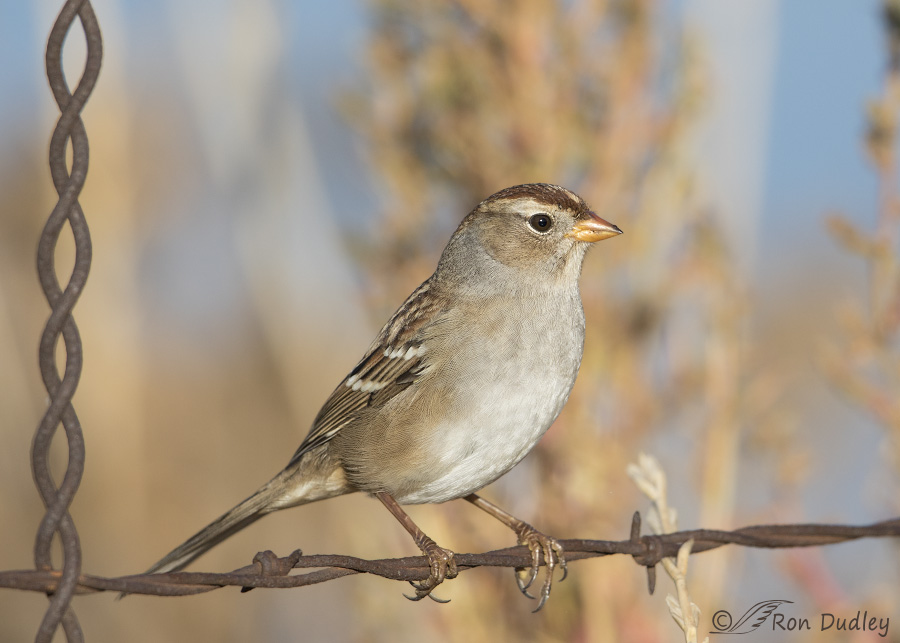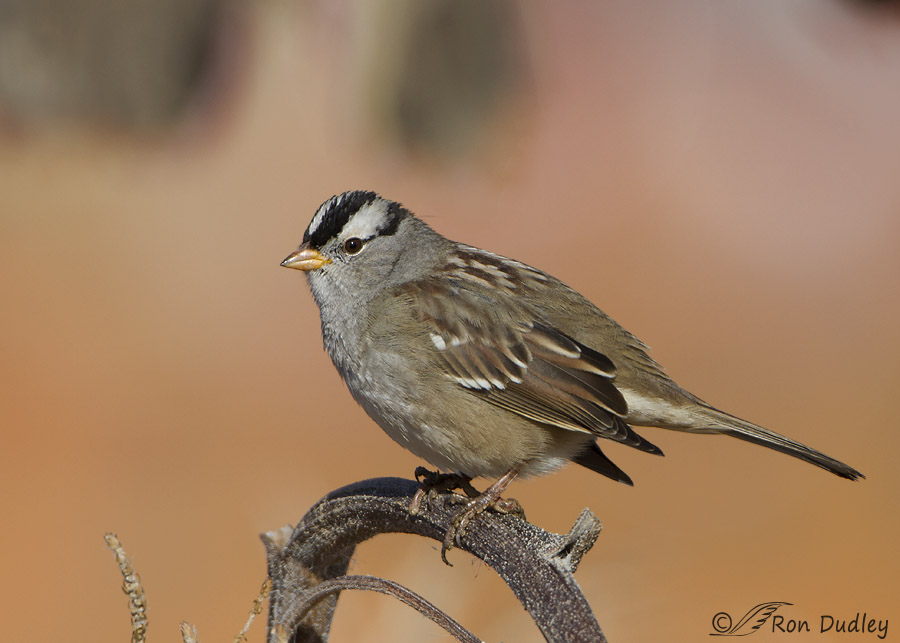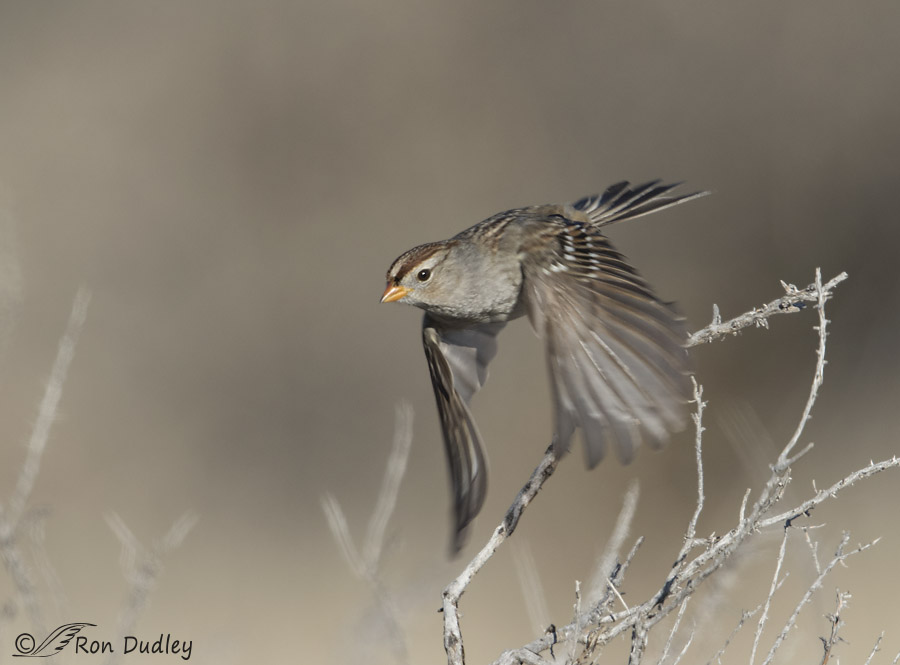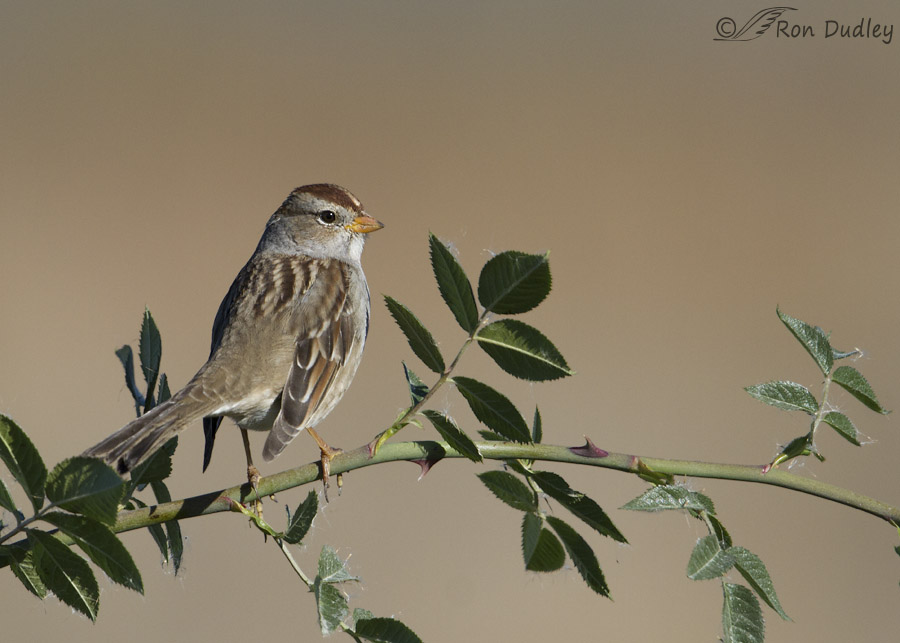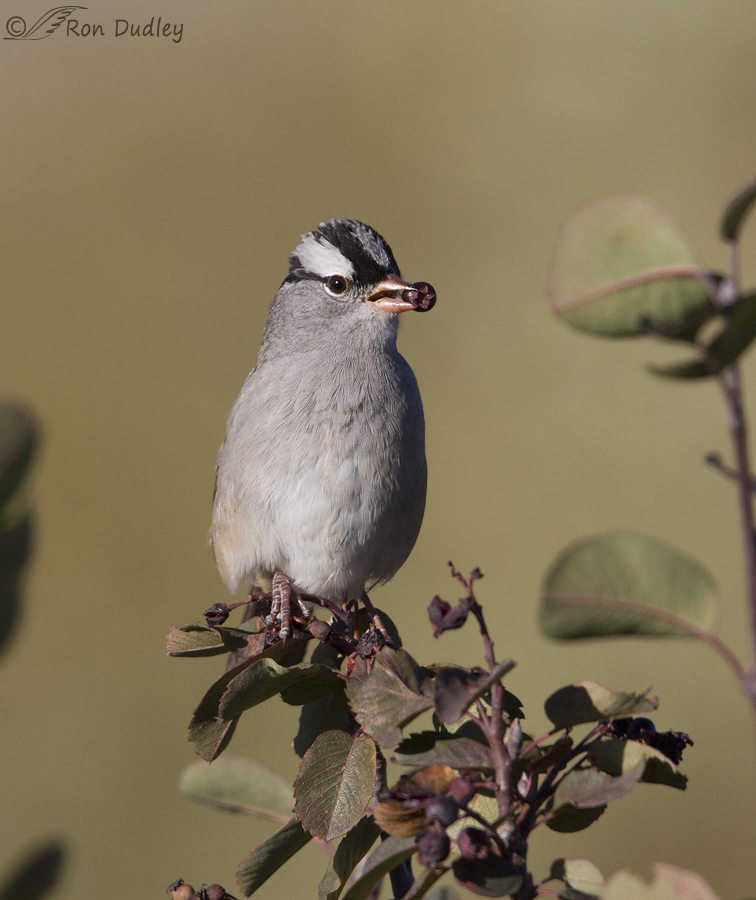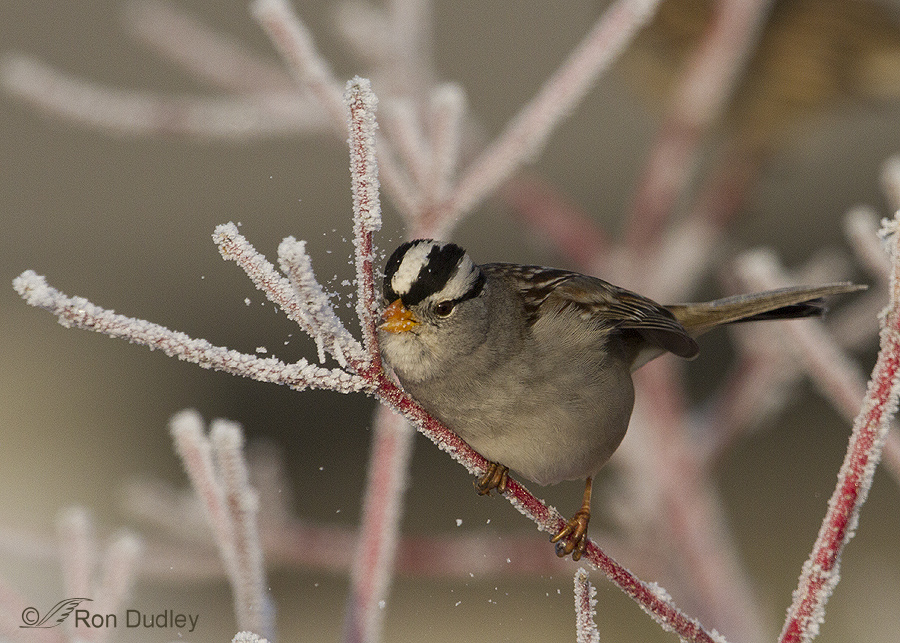Tag: white crowned sparrow
White-crowned Sparrow Immatures And Adults – Skewed Populations?
WC Sparrow In Flight (a shot I’d have missed without the 7D Mark II)
White-crowned Sparrow On Wild Rose
White-crowned Sparrow Attempting To Feed In The Wind
Frost-eating White-crowned Sparrow
A Tribute To The “Common Species”
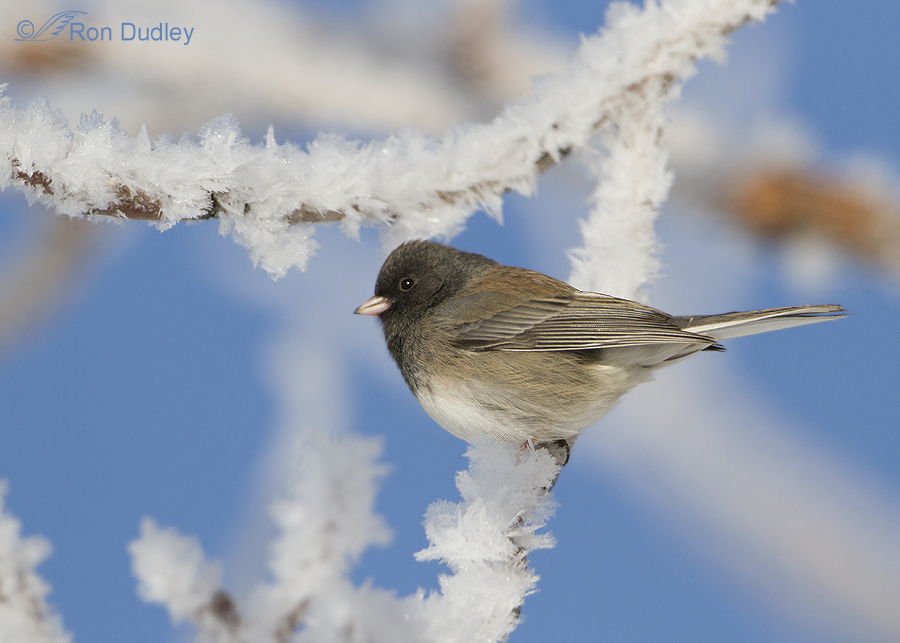
Many bird photographers tend to largely ignore the most common species in their areas and I’m as guilty of that as anyone.
There seems to be a sort of “supply and demand” philosophy – the more common they are the less appealing they are as subjects. That’s too bad for at least a couple of reasons – familiar birds can be just as interesting and beautiful as many of the others and what’s “common” where we live and/or shoot is very often uncommon or even nonexistent for folks in other areas. This post is meant to make up to some degree for my own poor judgment at times in choosing subjects.
Several Sparrow Species In Frost And Snow
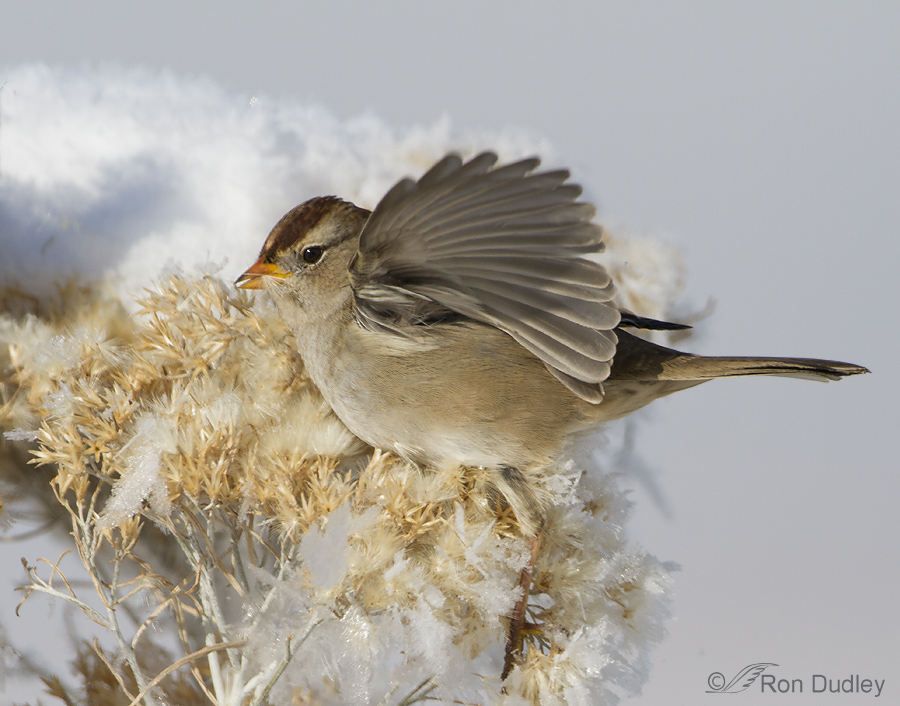
In my area most sparrow species aren’t easy to approach or catch out in the open for most of the year but when it’s very cold and they decide it’s time to begin their communal morning feeding routine they become much braver souls. Earlier this week I photographed three species of sparrows as they harvested seeds from their frost-covered parent plants.
A White-crowned Sparrow And The Effect Of Depth Of Field
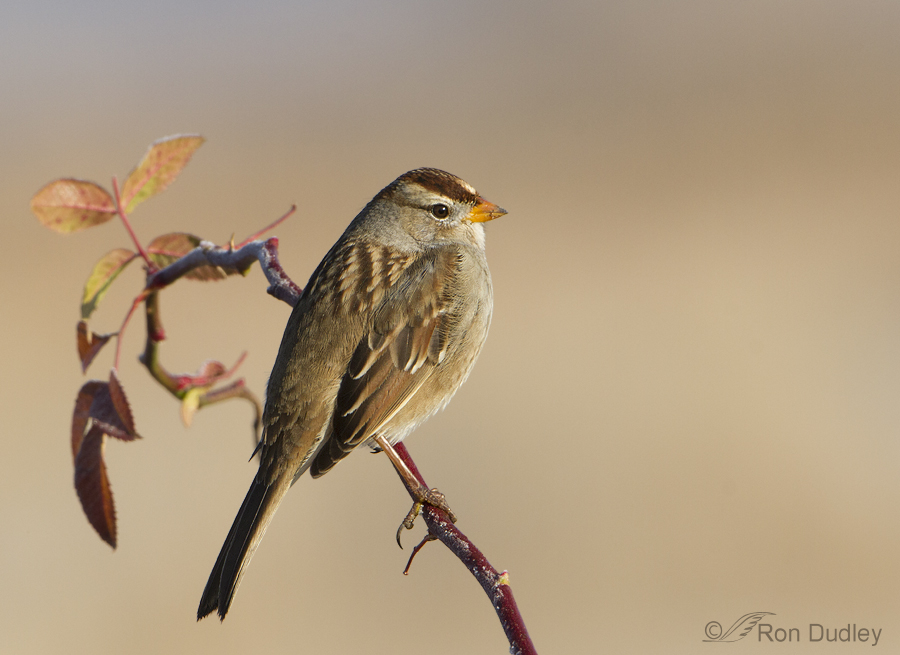
Two days ago I found this juvenile White-crowned Sparrow sunning itself in a wild rose-bush at Farmington Bay. It was a cold morning (you can see frost on the perch behind the bird) and due to the frigid temperature the sparrow wasn’t flitting around much so I did a little experimentation with depth of field.
White-crowned Sparrows – Sunflower Gluttony And Crossed Bills
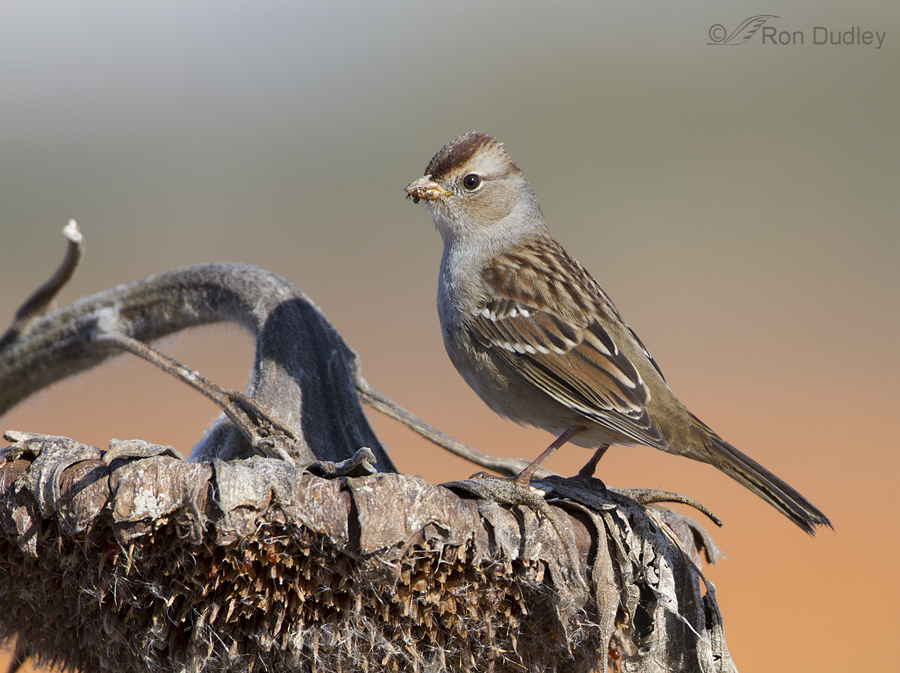
A local pumpkin farmer (Pack Farms) plants sunflowers along the periphery of his pumpkin field and each fall they provide a messy bounty for a variety of birds. Most species seem to be tidy eaters but the juvenile White-crowned Sparrows are an exception.
The orange in the background of these shots is – you guessed it – pumpkins.
Strong Graphic Lines – A Matter Of Taste
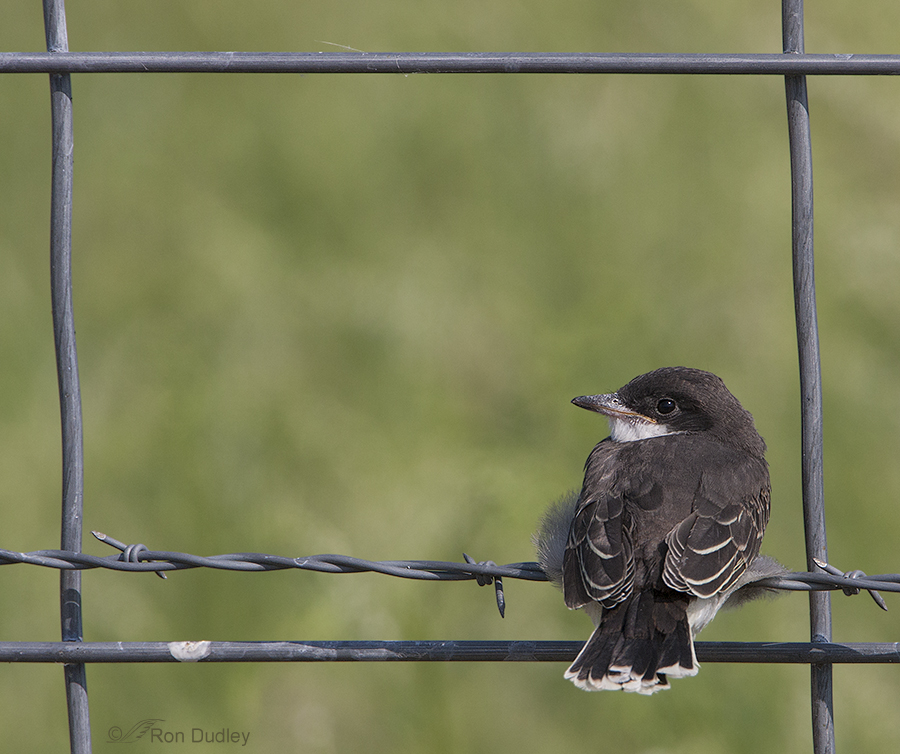
I’ve been a fan of strong graphic lines in my images ever since my friend Richard Ditch introduced me to their potential a few years ago. The source of those lines may be natural or unnatural but since my subjects are mostly birds and many of them perch on fences, my graphic lines are often provided by fence wires. In some ways I’d prefer natural elements in my images but wires can also be compositionally and visually interesting
A Few Mammals For A Change
I’m primarily a bird photographer but when I’m in the field I do see other types of wildlife and I’m not hesitant to photograph them in the least.
Why The Killdeer Doesn’t “Perch”
More than half of all bird species (5000+) are classified in order Passeriformes and referred to as passerines. Passerines, sometimes known as perching birds or less accurately as songbirds, have four toes – three of them directed forward and one toe directed back. This arrangement allows for stable perching on structures such as small branches and herbaceous stems because the hind toe is opposable to the others (much like our thumbs are opposable to our fingers) which allows “grasping”. Interestingly, the tendon/bone anatomy of a passerine causes automatic closing of the foot (grasping) when the leg bends – such as when it lands on a typical perch. This arrangement also allows passerines to sleep on a perch without falling off. Here you can see the typical “three toe forward, one toe back” arrangement on this Savannah Sparrow that allows passerines to grasp narrow perches like branches or wires and remain stable on them. Animals without something like this toe arrangement would be “walking a tightrope” but these birds have no problem with it. Maintaining stability on a perch such as this would be virtually impossible without the ability to grasp, particularly in a breeze (this is a Loggerhead Shrike). This shot of a juvenile White-crowned Sparrow gives us a better look at all four toes. One more look at the opposable rear toe, this time on a Western Meadowlark. Ok, now to my point. Many birds that do not typically “perch” (with exceptions) are waterfowl and shorebirds. The Killdeer is a plover but because of the habitats…
Birds Dealing With Snow And Cold
Birds use a variety of tactics to deal with the harsh conditions presented by an unusually cold and snowy winter. Some are more effective than others. I thought it might be interesting to see a few of them that I’ve been able to photograph in the last several weeks. My usual disclaimer for posts relating to behaviors; many of these images are technically lacking but I think they do illustrate some of the conditions these birds are having to cope with. 1/2500, f/6.3, ISO 640, 500 f/4, 1.4 tc, natural light After a fresh snow, the food source for many small birds is largely hidden and unavailable without some extraordinary measures. This juvenile White-crowned Sparrow, and others in the flock, were flitting from one snow-covered perch to another in an obvious attempt at knocking the snow off so they could get to the seeds underneath. Here you can see the snow falling away and immediately afterward the sparrow fed on the uncovered seeds. 1/2500, f/7.1, ISO 500, 500 f/4, 1.4 tc, natural light, not baited, set up or called in When it gets very cold most water sources freeze up completely which makes fish largely inacessable to Bald Eagles so many of them turn to scavenging as their primary food source. But this species adapted very well to scavenging eons ago which is one of the reasons Ben Franklin looked in disfavor at the proposal to make the Bald Eagle our national bird. 1/1000, f/5.6, ISO 640, 500 f/4, 1.4 tc, natural light, not baited, set up or…
Birds From Our Recent Trip To Red Rock Lakes National Wildlife Refuge
I spent most of last week at Red Rock Lakes National Wildlife Refuge in southwest Montana. Regular readers of this blog know that it’s’ one of my favorite places on earth. On this trip we didn’t have as much luck with raptors as we usually do at Red Rock but we still had a nice variety of birds, mostly good weather and we experienced some breathtaking scenery and blessed solitude. Overall, a wonderful experience. 1/3200, f.6.3, ISO 640, 500 f/4, 1.4 tc Mountain Bluebirds are common this time of year so I’ll begin with a few of them. The blues of the males are very intense and hard for the photographer to resist. It’s difficult to catch them on a natural perch but most of the fence posts in the area are old and rustic which I like. 1/2000, f.7.1, ISO 500, 500 f/4, 1.4 tc I’m pretty sure this male was attempting to expel a pellet (rather than yawning) although it didn’t succeed before it flew off. 1/3200, f.7.1, ISO 800, 500 f/4 The female Mountain Bluebirds have less dramatic colors and their beauty is more subtle. I caught this one hovering in front of her nest. It’s been a traumatic spring for these bluebirds. On Memorial Day a big storm dumped 15″ of snow resulting in an 85% mortality of bluebird chicks at the refuge. They’re now trying again and have renested. 1/1600, f.6.3, ISO 500, 500 f/4, 1.4 tc Another male in the middle of a shake. I just liked the ruffled feathers combined…


